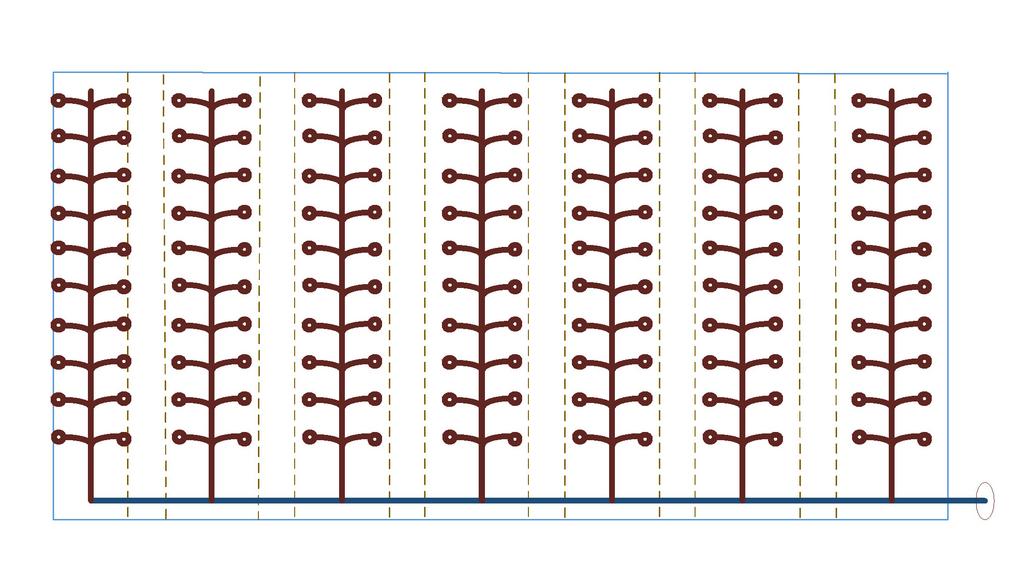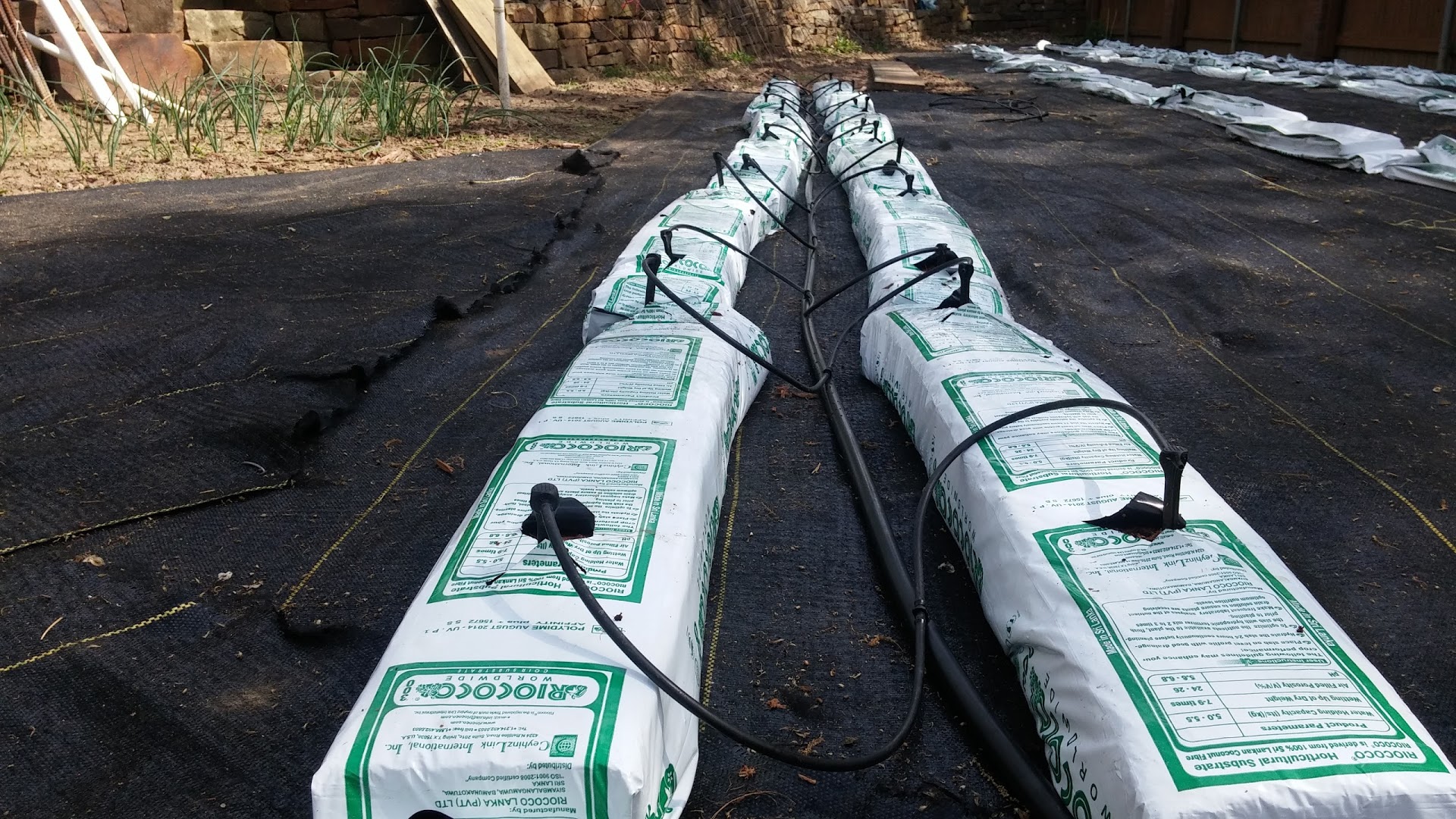I am trying to figure out a simple design for drip irrigation for my small garden where I like to pack in the plants kinda close to each other.
Assuming my plot is 24' x 12', I am thinking of an approximate design similar to this:

The dotted lines signify rows that I walk up and down on. Nothing is planted there. The small circles are the pepper plants, spaced approximately 1 foot apart The dark blue line at the bottom is my 1/2" tube that will have 6 tee connectors and one L connector. This is what I am calling a "comb" pattern, with branches off of the main line. Each branch is (I guess) 1/2" drip line and then they branch off to the plants with 1/4" tube with an emitter that will apply water directly to the plant.
One thing that I am not understanding completely is if this design is even possible. Will water run to everyplant? I was under the impression that each tee connector will reduce the water pressure by half. So, for example, if the pressure was say 20psi coming in to the system, the water running down the first row and also onto the second row would be 10psi, the water running down the second row and onto the third row would be 5 psi, etc. Do I need some kind of pressure regulator for each row?
As an added complexity, I am hoping to run IRT mulch down each row of plants, so the 1/2" tube running down each row will be covered by the IRT mulch. There will be holes in the IRT mulch for each plant and its associated emitter.
Am I over complicating things or trying to do too much?
Thanks in advance for any recommendations or advice.
Assuming my plot is 24' x 12', I am thinking of an approximate design similar to this:

The dotted lines signify rows that I walk up and down on. Nothing is planted there. The small circles are the pepper plants, spaced approximately 1 foot apart The dark blue line at the bottom is my 1/2" tube that will have 6 tee connectors and one L connector. This is what I am calling a "comb" pattern, with branches off of the main line. Each branch is (I guess) 1/2" drip line and then they branch off to the plants with 1/4" tube with an emitter that will apply water directly to the plant.
One thing that I am not understanding completely is if this design is even possible. Will water run to everyplant? I was under the impression that each tee connector will reduce the water pressure by half. So, for example, if the pressure was say 20psi coming in to the system, the water running down the first row and also onto the second row would be 10psi, the water running down the second row and onto the third row would be 5 psi, etc. Do I need some kind of pressure regulator for each row?
As an added complexity, I am hoping to run IRT mulch down each row of plants, so the 1/2" tube running down each row will be covered by the IRT mulch. There will be holes in the IRT mulch for each plant and its associated emitter.
Am I over complicating things or trying to do too much?
Thanks in advance for any recommendations or advice.


